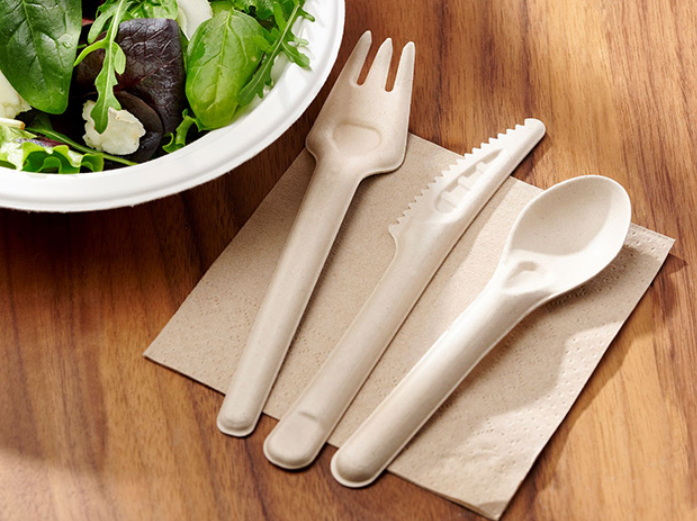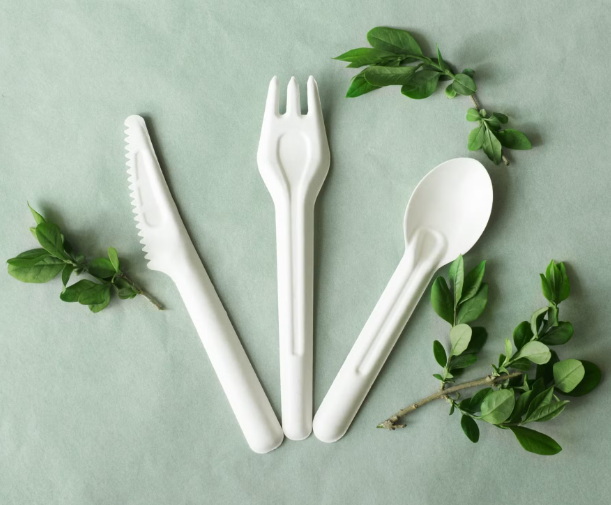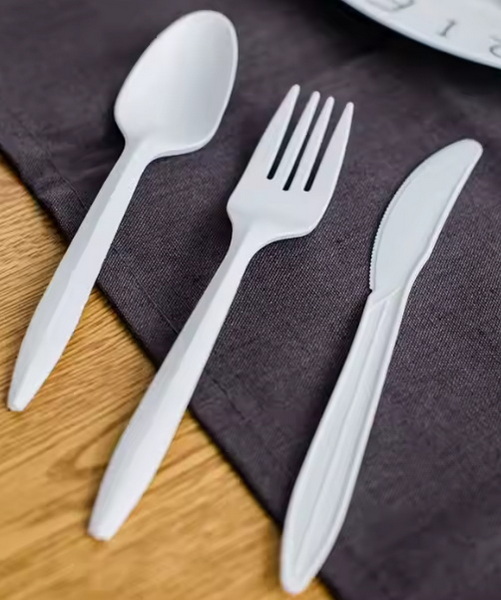
Content Menu
● Introduction to Disposable Cutlery
>> Materials Used in Disposable Cutlery
● Strong Disposable Cutlery for Hot Foods
>> Heat-Resistant Plastic Cutlery
>> Wooden Cutlery
● Strong Disposable Cutlery for Cold Foods
>> Compostable/PLA Cutlery
>> Plastic Cutlery
● Sustainability and Eco-Friendliness
>> Sulapac: A Sustainable Option
>> Bioplastics and Their Impact
● Innovations in Disposable Cutlery
>> Edible Cutlery
● Consumer Preferences and Market Trends
>> Impact of Regulations
● Conclusion
● Frequently Asked Questions
>> 1. Can I Use Compostable Cutlery for Hot Foods?
>> 2. Is Wooden Cutlery Safe for All Types of Foods?
>> 3. How Do I Dispose of Compostable Cutlery Properly?
>> 4. Are Recycled Plastic Utensils Suitable for Hot Foods?
>> 5. What Is the Most Eco-Friendly Cutlery Option?
In recent years, the demand for disposable cutlery has increased significantly due to its convenience and ease of use in various settings, such as outdoor events, fast-food restaurants, and casual gatherings. However, one of the primary concerns when choosing disposable cutlery is its ability to handle both hot and cold foods effectively. This article will delve into the world of strong disposable cutlery, exploring its capabilities, materials, and applications for hot and cold foods.

Introduction to Disposable Cutlery
Disposable cutlery is made from a variety of materials, including plastic, wood, and bioplastics like PLA (Polylactic Acid). Each material has its strengths and weaknesses when it comes to handling different food temperatures.
Materials Used in Disposable Cutlery
1. Plastic Cutlery:
- Heat-Resistant Plastic: Ideal for hot foods, as it maintains its shape and integrity even at high temperatures. Polypropylene is a common material used for this purpose.
- Standard Plastic: Suitable for cold foods, offering a cost-effective option. However, it may warp or melt when exposed to heat.
2. Wooden Cutlery:
- Wooden cutlery, such as birch, is sturdy and resistant to warping. It is suitable for both hot and cold foods, providing an eco-friendly alternative.
3. Compostable/PLA Cutlery:
- PLA cutlery is excellent for cold foods and offers a sustainable option. However, it is not recommended for hot foods as it may warp under high temperatures.
Strong Disposable Cutlery for Hot Foods
When serving hot foods, it's crucial to use strong disposable cutlery that can withstand high temperatures without compromising safety or functionality.
Heat-Resistant Plastic Cutlery
Heat-resistant plastic cutlery, often made from polypropylene, is designed to handle hot foods effectively. It maintains its shape and does not melt or warp, ensuring a safe dining experience. This type of cutlery is widely used in fast-food chains and restaurants where hot meals are frequently served.
Wooden Cutlery
Wooden cutlery is another excellent option for hot foods. It is durable, eco-friendly, and does not impart flavors to the food. Wooden utensils are also resistant to warping, making them ideal for serving hot meals. The natural texture of wood provides a pleasant dining experience, enhancing the overall sensory enjoyment of the meal.
Strong Disposable Cutlery for Cold Foods
For cold foods, strong disposable cutlery should be sturdy enough to handle dense or frozen textures without breaking.
Compostable/PLA Cutlery
Compostable cutlery made from PLA is a sustainable choice for cold foods. It is sturdy and offers an eco-friendly alternative to traditional plastics. PLA cutlery is biodegradable and compostable, reducing environmental impact compared to conventional plastics.
Plastic Cutlery
Standard plastic cutlery is cost-effective and suitable for cold foods like salads or desserts. However, it should be chosen in thicker designs to ensure sturdiness. Thicker plastic cutlery can handle the rigors of cold foods without bending or breaking.

Sustainability and Eco-Friendliness
In recent years, there has been a growing emphasis on sustainability in disposable cutlery. Options like wooden and compostable cutlery offer eco-friendly alternatives to traditional plastics.
Sulapac: A Sustainable Option
Sulapac offers a bio-based, compostable, and recyclable material for cutlery that is both durable and heat-resistant. It provides a natural look and feel without adding flavors to food. Sulapac is made from wood-based biomaterials, making it an attractive choice for those seeking environmentally friendly options.
Bioplastics and Their Impact
Bioplastics, such as PLA, are derived from renewable biomass sources like corn starch or sugarcane. They offer a more sustainable alternative to fossil-based plastics, reducing carbon emissions and dependence on non-renewable resources. However, the production of bioplastics requires careful consideration of land use and resource allocation to ensure they are truly sustainable.
Innovations in Disposable Cutlery
The industry is continually evolving with new innovations aimed at improving sustainability and functionality. For instance, some companies are developing cutlery from plant-based materials that are both compostable and heat-resistant, offering a versatile solution for both hot and cold foods.
Edible Cutlery
Edible cutlery made from ingredients like wheat flour or corn flour is another innovative approach. These utensils are not only biodegradable but also safe for consumption, reducing waste entirely. However, they are still in the early stages of development and may not be widely available or cost-effective for large-scale use.
Consumer Preferences and Market Trends
Consumer preferences play a significant role in shaping the market for disposable cutlery. With increasing awareness about environmental issues, there is a growing demand for eco-friendly options. As a result, companies are shifting towards sustainable materials and designs that meet consumer expectations while minimizing environmental impact.
Impact of Regulations
Regulations and policies also influence the market by promoting the use of sustainable materials. For example, bans on single-use plastics in some regions have accelerated the development and adoption of biodegradable alternatives. These regulations not only drive innovation but also encourage consumers to opt for environmentally friendly choices.
Conclusion
Choosing the right strong disposable cutlery for hot and cold foods is essential for ensuring a safe and enjoyable dining experience. Whether you opt for heat-resistant plastics, wooden cutlery, or sustainable options like PLA or Sulapac, each material has its unique benefits and applications. By understanding these differences, you can make informed decisions that balance functionality with eco-friendliness.

Frequently Asked Questions
1. Can I Use Compostable Cutlery for Hot Foods?
- No, compostable cutlery made from PLA is not suitable for hot foods as it may warp under high temperatures. Instead, opt for heat-resistant materials like wooden or specially designed plastic cutlery.
2. Is Wooden Cutlery Safe for All Types of Foods?
- Yes, wooden cutlery is safe for both hot and cold foods. It is sturdy enough to handle dense or frozen textures without breaking.
3. How Do I Dispose of Compostable Cutlery Properly?
- Compostable cutlery should be disposed of in industrial composting facilities for proper breakdown. Check local waste management guidelines for options.
4. Are Recycled Plastic Utensils Suitable for Hot Foods?
- No, recycled plastic utensils are best suited for cold foods as they may not withstand high temperatures.
5. What Is the Most Eco-Friendly Cutlery Option?
- The most eco-friendly cutlery options include wooden, compostable PLA, and Sulapac cutlery. These materials offer sustainable alternatives to traditional plastics.

















